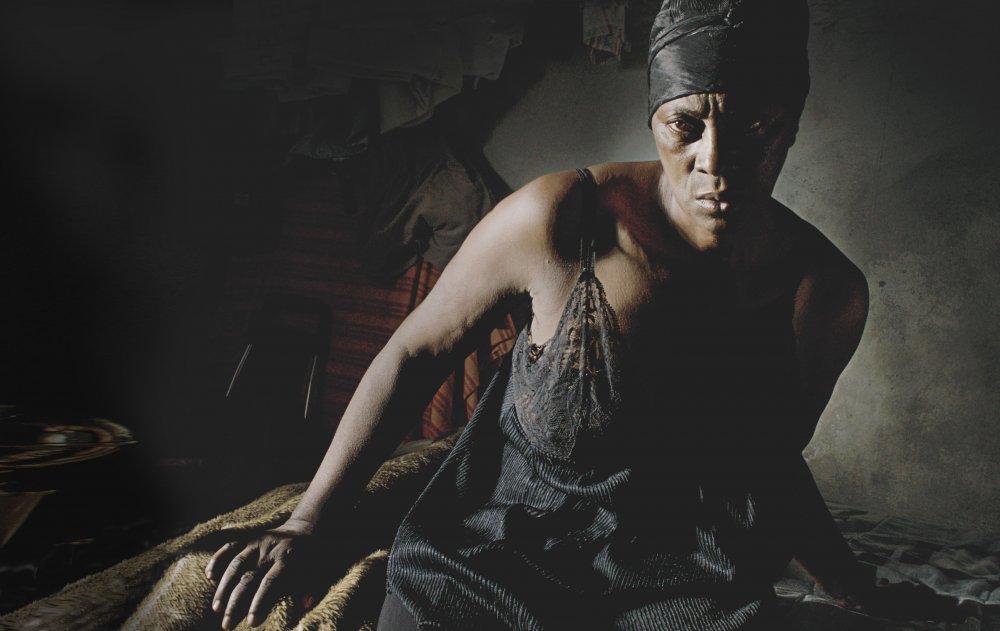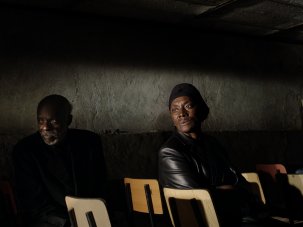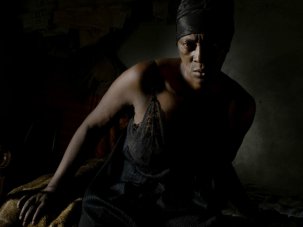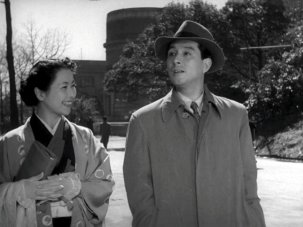When Catherine Breillat, president of the jury at last August’s edition of the Locarno Film Festival, announced that Pedro Costa’s Vitalina Varela had taken the top prize, she stressed her humility in the face of a masterpiece. The jury was unanimous in their praise for a film, she said, “that will enter the heritage of world cinema”.
Vitalina Varela is released in UK cinemas on 6 March 2020.
About a Cape Verdean peasant who arrives in Lisbon to search for her absent husband only to find that he died days before her arrival, Vitalina Varela belongs in the lineage of the epic western narratives of John Ford, in which a lonely figure returns to a hollowed-out homestead and is confronted by living reminders of their previous failed attempts at forming a life of stability and peace.
Much of what has been written about the movie since has been as ecstatic as Breillat. References to Vermeer, Caravaggio and Rembrandt have been on everybody’s lips, comparisons as sincere as they are vague.
Curiously, however, Costa himself acts like a man obsessed with practicalities. To hear him speak about his work – which morphed in the early 2000s from budgeted productions with union crews into a far more intense and solitary practice drawing much more on the stories and talents of dispossessed Cape Verdeans living in the slums of Lisbon in films such as In Vanda’s Room (2000), Colossal Youth (2006) and Horse Money (2014) – is to see his movies in a new light. He appears to have devised a psychological framework for himself, his cast and his crew that emulates an ideal of the classical Hollywood era, one in which filmmaking is making first and foremost.
Vitalina Varela is, like all of Costa’s work this millennium, an incantation. It is the latest attempt by both filmmaker and participants – including Varela herself – to conjure the past partly through half-mumbled traces of memory and partly through their own reliving of it under the amplifying effect of Costa’s style. Yet this is far from the mysticism that his work invites from many good-natured admirers; the made-ness of Vitalina Varela only stresses further the quality of the work, the complexity of ostensibly simple images, or the enormity of gestures belonging more to the titanic cinema of silent-era giants than to virtually anything else produced in the last 20 or 30 years.

Pedro Costa
Credit: Jonathan Wong, Getty Images
A good place to start would be with Vitalina herself.
The first time I saw her, she opened the door of her house – the one we shot in, with the blue door that you see two or three times in the film. She opened the door because she felt my presence. I didn’t knock.
I was searching for a house to shoot an interior for Horse Money. Somebody suggested that there was a very small, very Cape Verdean house in the neighbourhood. It used to belong to a man, a strange guy, who died in strange circumstances.
The house was empty. “Maybe we could break in,” we thought. The door opened. She came out and stood on the doorstep. She was in black. This was less than six months after she arrived and – as she says in the film – less than six months after the funeral of her husband. She was more or less living in hiding, like a nun in a convent.
I asked if I could shoot a little piece and she was very kind. She said, “Yes, of course.” At first she thought I was a person from immigration. Or police. There are a lot of raids there. She was a bit afraid, but we became more or less friends and she took this part in the film.
I already had the desire to make a film with her. Not because of the mystery or the dark reality behind her husband – his death, her mourning. It was just her, her pure, simple presence.
I felt – more than the desire – the will, the necessity of doing something. Not only for the money [for Vitalina], since as always we don’t have much money to offer. That’s not the reason to do the films. But she could be occupied with something interesting perhaps. Or even a sort of therapy for her. Why not? Sometimes it works.
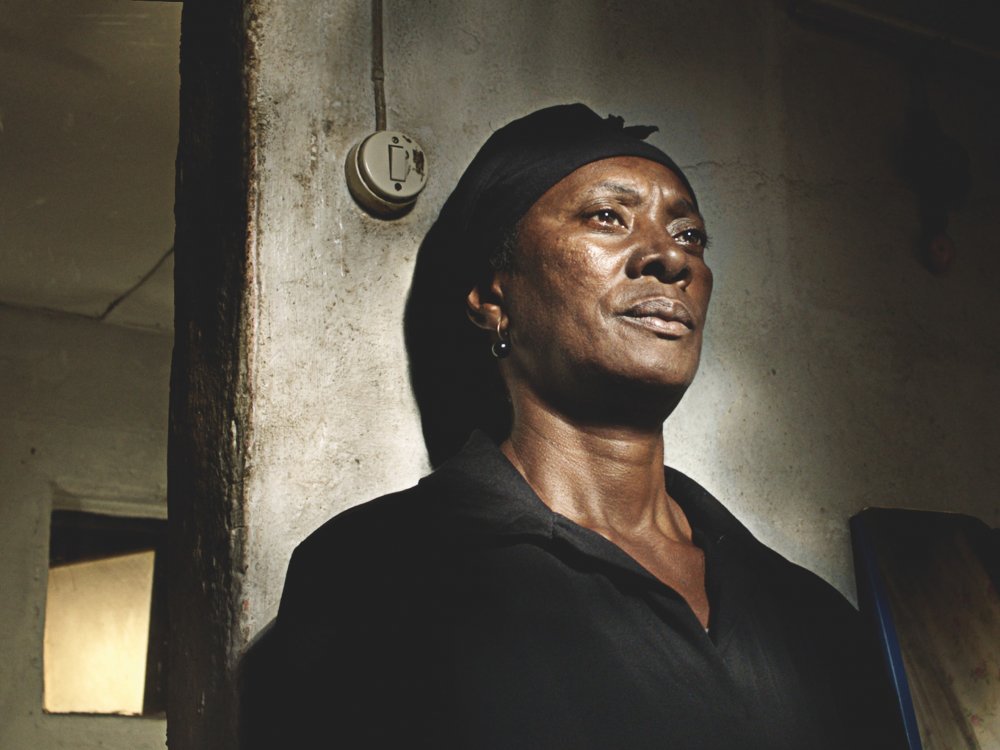
Vitalina Varela (2019)
How do you explain your ideas?
Everything must come from these people’s memories, their real lives. Then there’s a kind of work that they are not used to. Sometimes it is strange for the newcomers. One month or less after they start working – for Vitalina, Ventura [the aged and enigmatic central presence in Costa’s Colossal Youth and Horse Money] – the mechanics become simple. Long hours of repetition, rehearsal, talking. Rehearsing just a simple gesture or some kind of movement around the house, around the neighbourhood.
The simplicity of it, of the basics of the thing we are working on, imposes itself quite quickly. It’s not hard. Or, maybe, I’m lucky with the people I choose – they are very professional. These are people for whom it is natural to work. Their whole lives they were never not working.
Vitalina was a peasant. That’s what she did in Cape Verde, since she was five or six years old. She took care of the cows, the ox, the goat. She worked the land. All her life, until she came to Portugal. At ten she built their house. Hard work, long hours, stress, effort – it’s something she is used to.
Ventura too. I’m not saying that professional actors aren’t used to this, but it’s different.

Vitalina Varela (2019)
You’ve said that you have an American way of working…
Yes. [Laughs]
…maybe even an American silent film way of working.
It’s a dreamy thing. I’m not sure if [Erich von] Stroheim worked this way. I have the feeling those people were not lazy. And not afraid, that’s the main thing.
Today, the young guys – even myself – are more vague. Afraid, late. Nothing like they were. You cannot conceive the idea that Ozu was ever late for something. Or couldn’t get to a shot on time.
Of course, I’m always, always afraid of failing and failing again. These silent guys are those who created this form and who I still return to. Especially the Americans. And a lot of the B-movie guys. They had the same kind of budget I have. Our work is ‘budgeted’ in the sense that we do what we can with five bottles and a shack. Like Joseph H. Lewis or somebody like that.

Vitalina Varela (2019)
But von Stroheim had all the resources at his disposal. And yet your low-budget bairro [neighbourhood] film seemed a lot like [Stroheim’s 1924 epic] Greed to me. This way of introducing characters – Vitalina coming down the stairs, one step at a time. Monumental stuff.
With Stroheim, it’s all about the eyes. When I say any of these things, I’m not comparing myself, of course. Only trying to dream about the way they used to do it. The mystery. Knowing very well that there are no artistic secrets. It is only work, work, work.
Luck too, of course. But luck comes from being there and not forgetting. Being very aware and concentrated.
Like that old sporting idea that the harder you practise, the luckier you get.
It’s also patience. As Ventura says in the film, Vitalina is a mirror of patience. He says, “Pray for us, mirror of patience.” What I felt during the shoot was that Vitalina was patient enough not only to work with us, [but] to bear what she had to bear – remembering, putting herself on the line, exposing herself.
She’s also a mirror of an army of women like her, Cape Verdeans – and not only Cape Verdeans, women in general. It’s a classic thing – a woman who waits. At this moment, I raise my bottle to Mikio Naruse. He was probably the one [filmmaker] – Mizoguchi as well, of course – who went the furthest with this kind of work with women.

Vitalina Varela (2019)
It makes me think of the scene in Naruse’s 1952 film Lightning where Hideko Takamine’s character watches her husband with disgust as he indifferently scratches his leg. This kind of gesture is something I see in your films all the time. Amplified movements. Do you ever go so far as to screen films for your team, for your cast?
I once showed some little bits of Chaplin. I don’t remember what. Not to Ventura or Vanda [who performed as herself in every scene of In Vanda’s Room] or any of those guys, but trying to create a kind of videotheque in the neighbourhood – the old neighbourhood, I mean.
Mostly for the kids. Then grown-ups came. But it was not the right moment. Or the place. Or the conditions. It crossed my mind to show two or three things to Ventura, but I realised then that he didn’t need it.
Does he or Vitalina have a relationship to the cinema?
No. Nothing. In Ventura’s house there are – as in all Cape Verdean homes – three or four big LCD screens. One in the bedroom, one in the living room, at least. And he never spends more than three seconds watching a screen. He doesn’t like TV.
But when we make the films and he watches them on a DVD, he watches each scene very carefully – watches the film attentively, from beginning to end, and more than once. He likes what he sees of himself – or the work, at least. The way it has been pointed towards him, the way he does some things very well. He’s bigger than in life, or nicer, or stranger. He’s very aware of that.
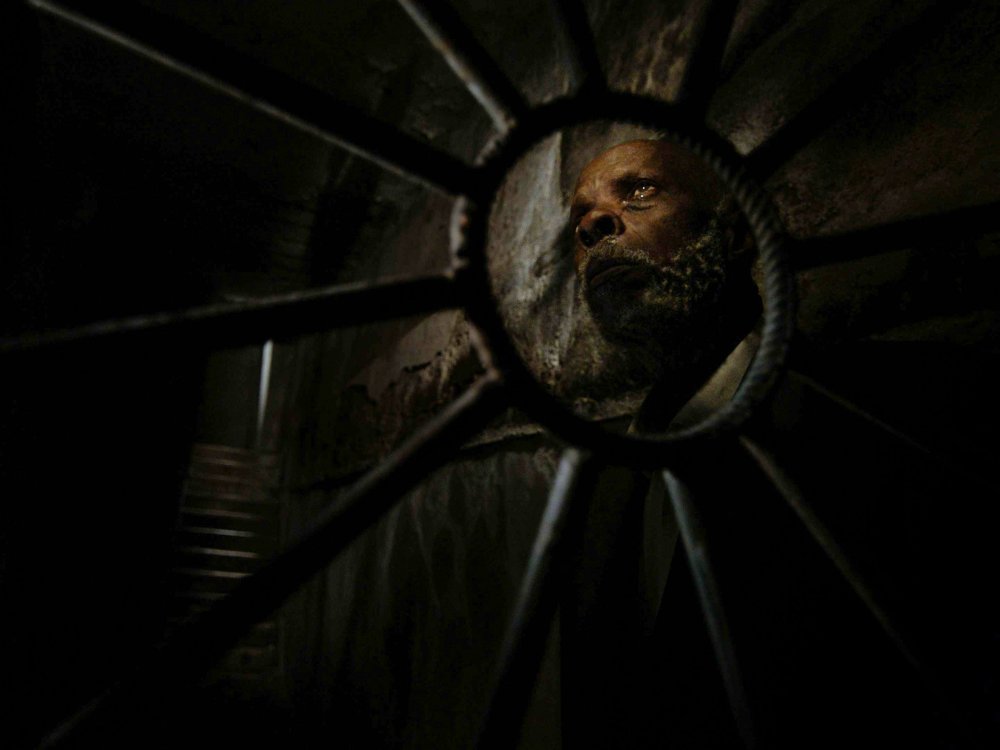
Vitalina Varela (2019)
Ventura has the most amazing screen presence – in this film, when he’s behind the altar, invoking and chanting about the Lamb of God…
He’s like that in real life. He’s that kind of presence. Not only the real one, but the mythical one. He climbs that stair, that mythical stair. For me he’s a very Hollywoodian actor. Like Robert Ryan. One of those very intense guys. The pure presence, the fascination.
With Vitalina, was there a process to get her to the point she’s at in the film?
I tried to be gentle. Not only because I thought this would be a dark and painful experience. The work is always intense but this would be different: more painful. A bit more like with Vanda.
Ventura is more detached, analytical. He can play a priest, as here. I’m not sure if the others could do it.
Vitalina and Vanda are more ‘surface of the skin’. Everything is more emotional. I thought that we should be careful – I should be careful. I thought: “Let’s start with movements. Walking around. ‘Easy’ shots.”
Then we went into the depths of the room, the house. We started collecting things: memories, phrases, words. While my partners – we were five: sound, image, two guys on production and me – were preparing the lights, the sound recordist was collecting sounds for the editing.
Preparation was already mingled. We started rehearsal shooting at the same time. I use Chaplin’s method: rehearsal on film.

Vitalina Varela (2019)
You mean simply rolling the camera for rehearsals?
Yeah. We start everything – sound, light – from the word go. Everything can shift two centimetres to one hundred centimetres. The light can change completely. The sound recordist is trying to hear and correct things.
From take one, rehearsal one, to the real take, it’s a world of work. The kind of work they did before. Or that [French filmmaker Jean-Marie] Straub does for one year to get to this place. Doing everything at the same time – Straub does it for one year and then he shoots three or four weeks. I shoot for six months.
Monday to Friday?
Monday to Saturday. That’s very important. You don’t need much money. You just have to have your mathematics correct. See if you can pay the people for six months, plus a little bit extra. You have to own your means – your camera, your sound, your lights. If you have that budget, you can think about the film with time.
That’s the secret. It’s all about time. Vitalina needs time. See how she moves, see how she talks – she needs time to get there. I need time to see the shot, to see the whole structure of the film. When I think I have the means to do it, we start. Then there is no turning back.
I won’t go into co-productions or all that kind of thing. I don’t have that many friends in that world. I know why. My films are not commercially successful. And they are not exotic enough. Sometimes too they are a bit dense.
You just need to keep watching it.
Yesterday, Vitalina said to me, “I would stay all night in the cinema.” I said, “No, they are going to close the place.”
“No, no. Leave the film running, with me talking up there, and I will sleep.”
-
The 100 Greatest Films of All Time 2012
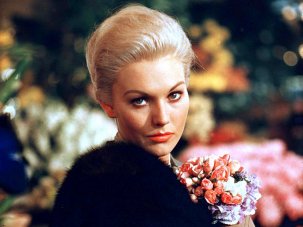
In our biggest ever film critics’ poll, the list of best movies ever made has a new top film, ending the 50-year reign of Citizen Kane.
Wednesday 1 August 2012
-
The Digital Edition and Archive quick link
Log in here to your digital edition and archive subscription, take a look at the packages on offer and buy a subscription.




